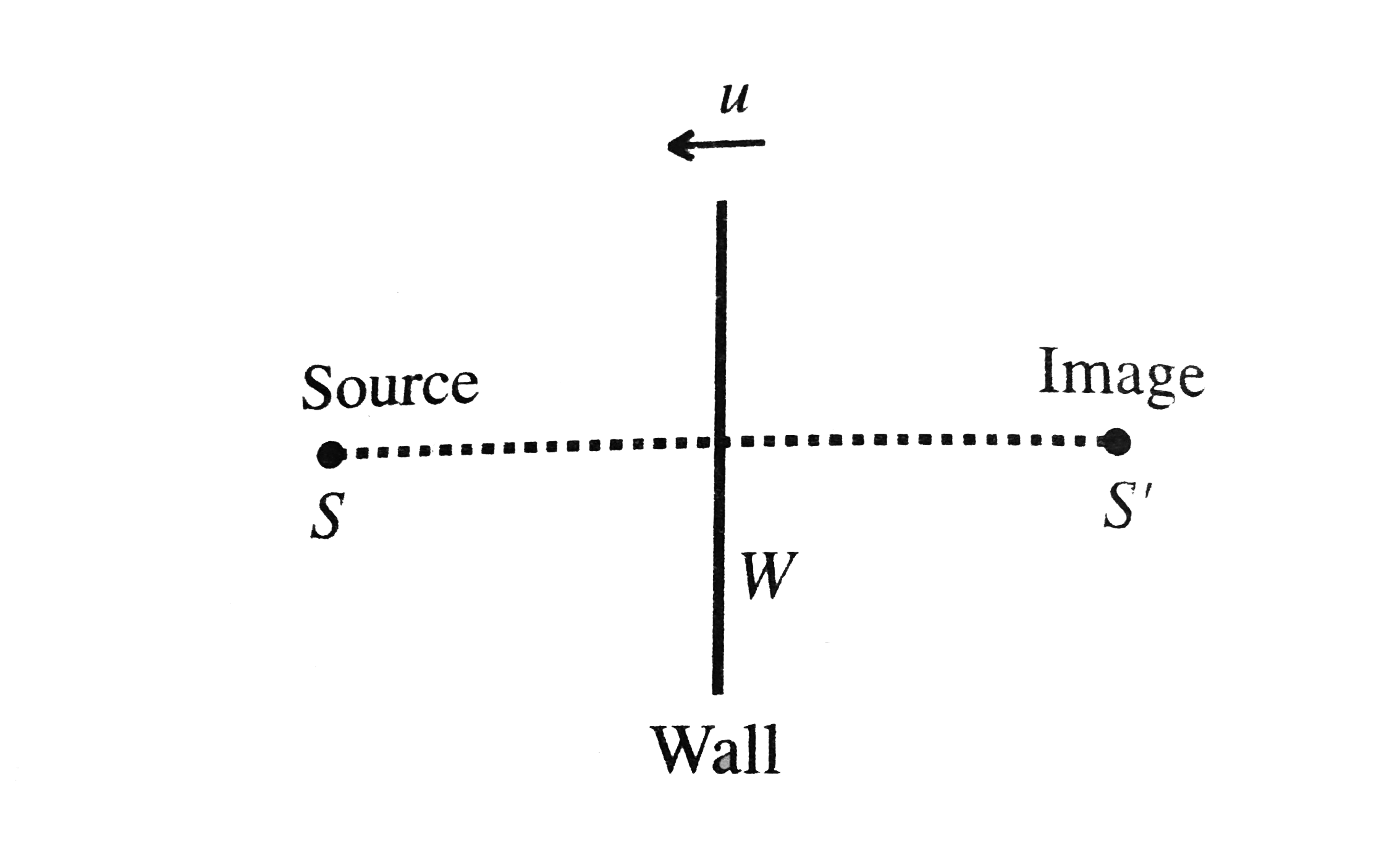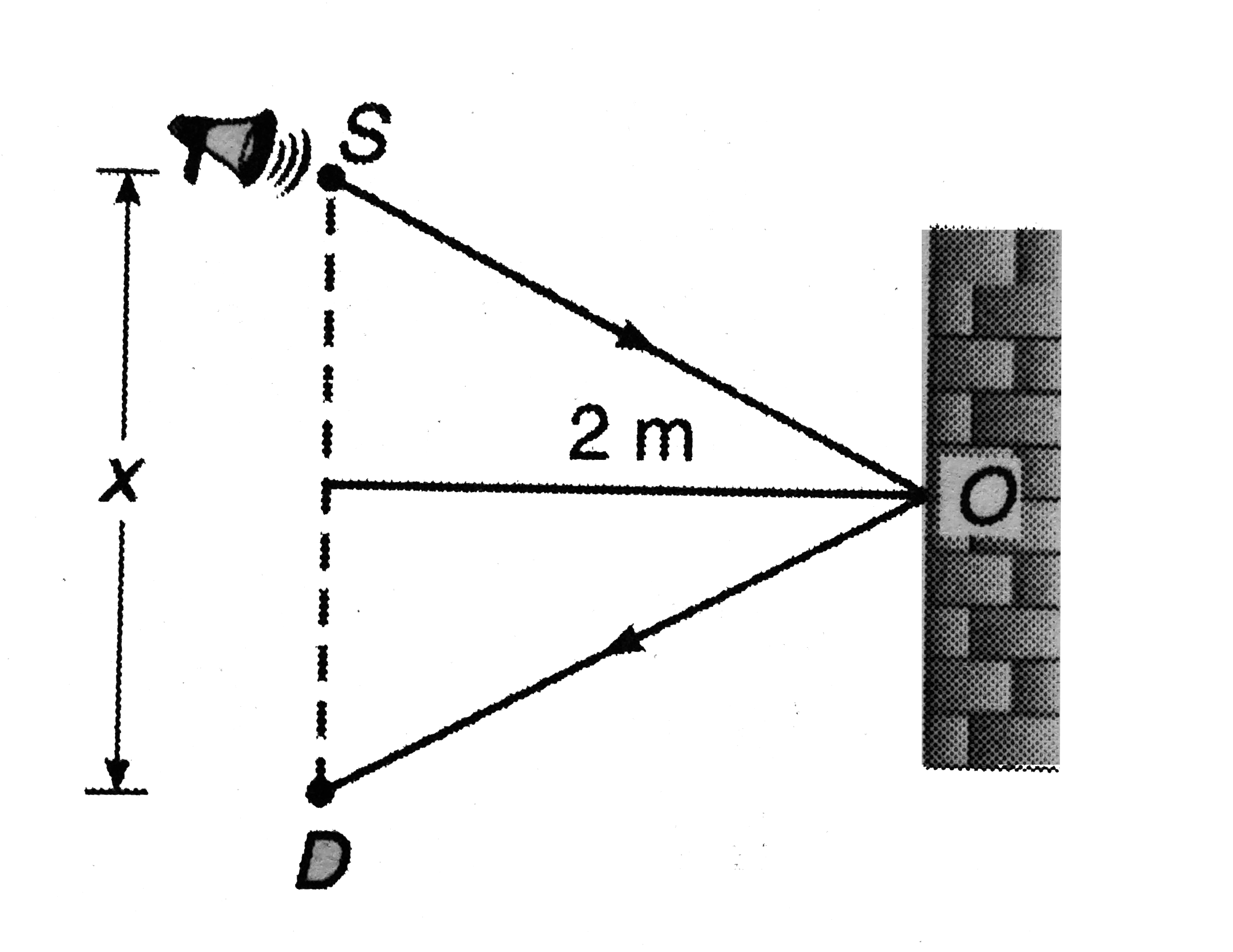Sound waves of frequency 600HZ fall normally on perfectly reflecting wall. The distance from the wall at which the air particles have the maximum amplitude of vibration is (speed of sound in air = 330m/s)
(a)13.75cm
(b)40.25cm
(c)70.5cm
(d)60.75cm
The correct Answer is:A
To solve the problem of finding the distance from the wall at which the air particles have the maximum amplitude of vibration when sound waves of frequency 600 Hz fall normally on a perfectly reflecting wall, we can follow these steps:
Step 1: Understand the Concept of Antinodes
The maximum amplitude of vibration occurs at points called antinodes. For a wave reflecting off a wall, the first antinode is located at a distance of λ4 from the wall.
Step 2: Calculate the Wavelength (λ)
The wavelength of a sound wave can be calculated using the formula:
λ=vf
where:
- v is the speed of sound in air (given as 330 m/s),
- f is the frequency of the sound wave (given as 600 Hz).
Substituting the values:
λ=330m/s600Hz=0.55m
Step 3: Convert Wavelength to Centimeters
Since the options are in centimeters, we convert the wavelength from meters to centimeters:
λ=0.55m×100cm/m=55cm
Step 4: Calculate the Distance to the First Antinode
The distance from the wall to the first antinode is given by:
Distance to first antinode=λ4
Substituting the value of λ:
Distance=55cm4=13.75cm
Step 5: Conclusion
Thus, the distance from the wall at which the air particles have the maximum amplitude of vibration is:
Distance=13.75cm
Final Answer
The required answer is 13.75cm.
---
The maximum amplitude of vibration occurs at points called antinodes. For a wave reflecting off a wall, the first antinode is located at a distance of λ4 from the wall.
The wavelength of a sound wave can be calculated using the formula:
λ=vf
where:
- v is the speed of sound in air (given as 330 m/s),
- f is the frequency of the sound wave (given as 600 Hz).
λ=330m/s600Hz=0.55m
Since the options are in centimeters, we convert the wavelength from meters to centimeters:
λ=0.55m×100cm/m=55cm
The distance from the wall to the first antinode is given by:
Distance to first antinode=λ4
Substituting the value of λ:
Distance=55cm4=13.75cm
Thus, the distance from the wall at which the air particles have the maximum amplitude of vibration is:
Distance=13.75cm
The required answer is 13.75cm.
Topper's Solved these Questions
- SOUND WAVESBOOK - DC PANDEY ENGLISHCHAPTER - SOUND WAVESEXERCISE - Level 1 Subjective
45 Videos
- SOUND WAVESBOOK - DC PANDEY ENGLISHCHAPTER - SOUND WAVESEXERCISE - Subjective Questions
1 Videos
- SOUND WAVESBOOK - DC PANDEY ENGLISHCHAPTER - SOUND WAVESEXERCISE - Level 1 Assertion And Reason
10 Videos
- SOLVD PAPERS 2017 NEET, AIIMS & JIPMERBOOK - DC PANDEY ENGLISHCHAPTER - SOLVD PAPERS 2017 NEET, AIIMS & JIPMEREXERCISE - Solved paper 2018(JIPMER)
38 Videos
- SUPERPOSITION OF WAVESBOOK - DC PANDEY ENGLISHCHAPTER - SUPERPOSITION OF WAVESEXERCISE - Level 2 Subjective
8 Videos
Similar Questions
 A driver in a stationary car horns which produces monochromatic sound waves of frequency n=1000Hz, normally towards a reflecting wall. If the wall approaches the car will a velocity u=3.3ms, calculate the frequency of sound reflected from wall and heard by the driver. What is the percentage change of sound frequency of reflection from the wall?
A driver in a stationary car horns which produces monochromatic sound waves of frequency n=1000Hz, normally towards a reflecting wall. If the wall approaches the car will a velocity u=3.3ms, calculate the frequency of sound reflected from wall and heard by the driver. What is the percentage change of sound frequency of reflection from the wall?
View SolutionDistance travelled by the sound produced by a tuning fork of frequency 50 Hz completing 200 vibrations is, (the velocity of sound in air is 330 m/s)
View SolutionA soure of sound of frequency 165 Hz generates sound waves which get fully reflected from a wall . A person standing at the wall starts moving away from the wall. The minimum distance of the point from the wall at which the person hears maximum sound is (velcoity of sound = 330 ms−1)
View SolutionA driver in a stationary car horns which produces sound waves having frequency 2000 Hz. The waves are directed normally towards a reflecting wall. If the wall approaches the car with a velocity u = 3.3 m/s. The change in the frequency of sound after reflection from the wall is x%. Then x
View SolutionA car blowing a horn of frequency 350 Hz is moving normally towards a wall a speed of 5 m/s The beat frequency heard by a person standing between the car and wall is (speed of sound in air =350 m/s )
View SolutionCalculate the minimum distance in air required between the source of sound and the obstacle to hear an echo. Take speed of sound in air = 350 ms−1
View SolutionA source of sound emitting waves at 360HZ is placed in front of a vertical wall, at a distance 2m from it. A detector is also placed in front of the wall at the same distance from it. Find the minimum distance between the source and the detestor for which the detector detects a maximum of sound. Take speed of sound in air=360m/s. Assume that there is not phase change in reflected wave.

View SolutionPlane harmonic waves of frequency 500Hz are produced in air with displacement amplitude 10−3cm. Deduce (i) the pressure amplitude (ii) the energy density and (iii) intensity of the wave. Speed of sound in air =300m/s. Density of air =1.29kg/m3.
View SolutionBus moving with speed v forwards a stationary wall. it produces sound of frequency f=420Hz.Theheardequencyofref≤ctedsoundomwallbydriveris490 Hz.Calca––tethespeedvofbus.Thevelocityofsound∈airis330 m/s.
View SolutionA man standing 25 m away from a wall produces a sound and receives the reflected sound.
Calculate the time after which he receives the reflected sound if the speed of sound in air is 350 m s−1.
View Solution
